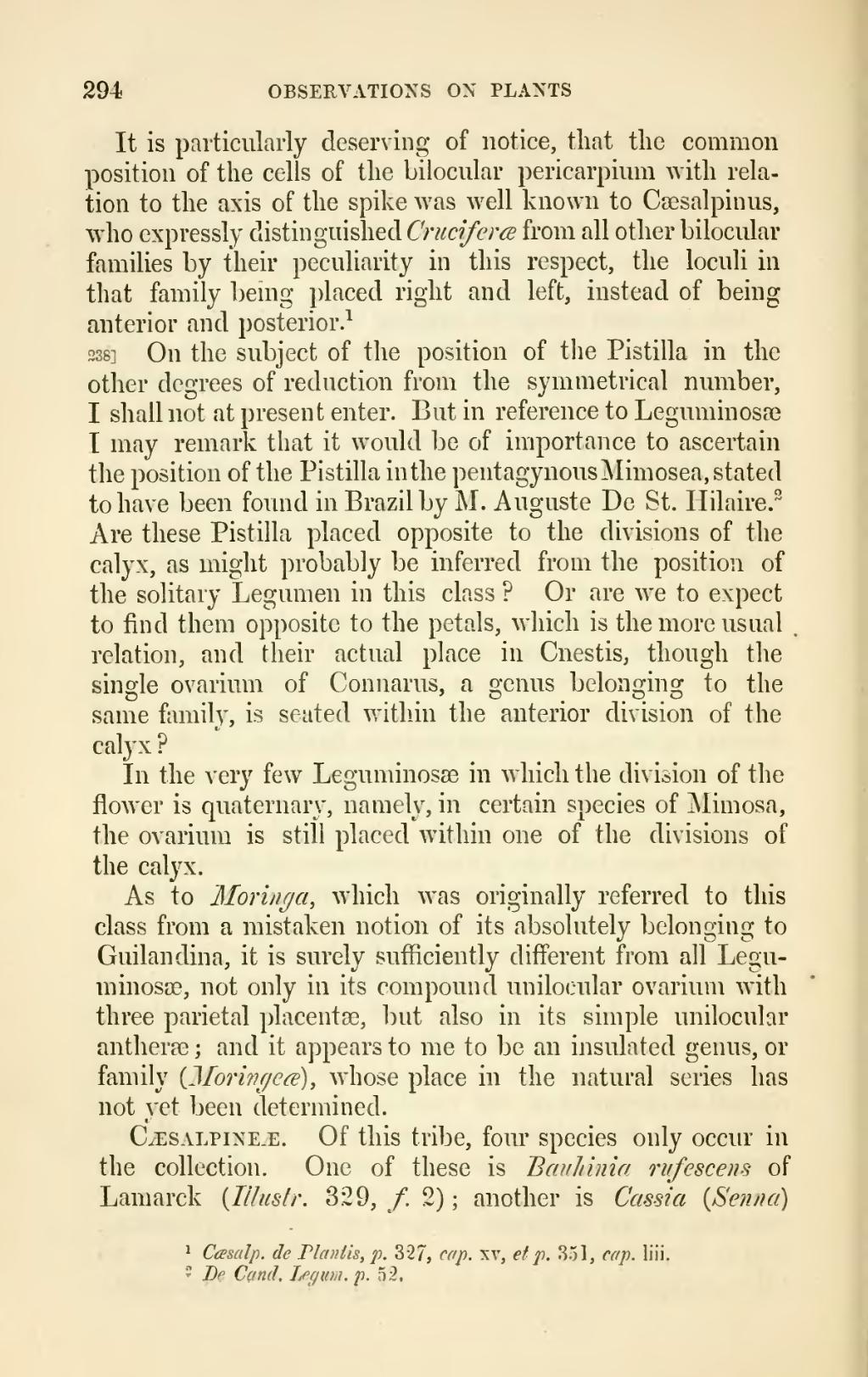294 OBSERVATIONS ON PLANTS
It is particularly deserving of notice, that the common position of the cells of the bilocular pericarpimn with rela- tion to the axis of the spike was well known to Csesalpinus, Avho expressly distinguished Cruciferce from all other bilocular families by their pecuharity in this respect, the loculi in that family being placed right and left, instead of being anterior and posterior.^
338] On the subject of the position of the Pistilla in the other degrees of reduction from the symmetrical number, I shall not at present enter. But in reference to Leguminosse I may remark that it would be of importance to ascertain the position of the Pistilla in the pentagynousMimosea, stated to have been found in Brazil by M. Auguste De St. Hilaire.^ Are these Pistilla placed opposite to the divisions of the calyx, as might probably be inferred from the position of the solitary Legumen in this class? Or are we to expect to find them opposite to the petals, which is the more usual . relation, and their actual place in Cnestis, though the single ovarium of Connarus, a genus belonging to the same family, is seated within the anterior division of the calyx?
In the very few Leguminosae in which the division of the flower is quaternary, namely, in certain species of ]\Iimosa, the ovarium is still placed within one of the divisions of the calyx.
As to Morinr/a, which was originally referred to this class from a mistaken notion of its absolutely belonging to Guilandina, it is surely sufficiently different from all Legu- minosoe, not only in its compound unilocular ovarium with three parietal placentge, but also in its simple unilocular antherae; and it appears to me to be an insulated genus, or family OJ^oriju/ea), whose place in the natural series has not yet been determined.
CiESALPiNE.E. Of this tribe, four species only occur in the collection. One of these is BauJihiia rufescens of Lamarck [IHuslr. 329, /. 2); another is Cassia {Senna)
^ CcEsalp. de Plaidis, p. 327, cap. xv, et p. 851, cap. liii. " De Cand. Legum. p. 52,
�� �
